
My project question was “How can we develop and produce a device that streamlines and simplifies the process of learning music theory?” Previously in semester one of this project I did a lot of primary and secondary research in order to gain a better understanding of a user’s wants and needs, current market competition and technological possibility. After researching the field of education and music theory I set myself up for my second half of the project where I began to design my prototype.
After completing a literature review in part one I found there to be a lack of quality education tools that help teach and develop knowledge within music theory and I discovered a gap in the market, or at least a way to innovate the market. I found the best way to make learning fun, enjoyable and motivating is to implement gamification methods to my design. This would later be in the form of a levelling system within the app which would see a global leaderboard added to create a competitive scene for users, I found this would increase the effectiveness of my device. During this second part of the project, I continued to research the topic of music theory, education, and competitor products to further develop my design ideas, to produce a prototype and app design for a product backed by research.
• To develop an intuitive and accessible device that simplifies the process of learning music theory.
• To integrate research-based methodologies into the design and functionality of the product.
• To enhance the effectiveness of music education by bridging gaps between traditional teaching methods and modern technological solutions.
• Apply findings from current research to refine and improve the conceptual and technical aspects of the device.
• Ensure the final product is both engaging and educational, balancing user experience with solid theoretical content.
• Conduct a comprehensive review of music theory education principles to ensure the device aligns with effective learning strategies.
When researching for this half of the project I focused on competitors, because the project is to create a product that solves a problem therefore my designs must be superior to the existing options on the market. The research I did was viewing item listings online to gather the specification on the current market. When evaluating the competition (Fretzalot, 2025, [online]) their design only came in two sizes, this is a problem I tackled by making my designs modular therefore they could fit on any sized guitar. Their price point is also high with the price being £190. When doing my cost analysis, I found that it would cost £21.46 to produce one unit and that I would sell it at £40 per unit. The competitor’s price being higher there would be room for my price to increase. “Price-quality heuristics involve consumers using price as a heuristic for quality, assuming higher prices indicate higher quality and vice versa.” (Sharma, Kadian, Shah, Heena, 2024 [online]) as shown by research it could be more beneficial for my price to increase avoiding the perception of being an inferior product, with the competitor’s price being higher it is possible for the consumer to assume that their product would be of a higher quality. Upon more research (Fretzalot, 2025, [online]) found that reviews say that it gets in the way of playing. This is because of the added elevation between the fret and the strings caused by installation. Based on this finding I designed a version that projects light therefore this mitigates the problem of being an obstacle when in use.
There is also the second biggest competitor (Thomann, 2023, [online]) priced at £47 also with a design similar to (Fretzalot, 2025, [online]) therefore it shares the same problems, however the reviews for the (Thomann, 2023, [online]) do not reflect well. Users often say that it is unresponsive, and that the software is buggy, reporting that it struggles to connect using Bluetooth. Overall, users were disappointed with the purchase.
However, with my product the software would be a crucial part that the company invests in as with a product like this the software is the most important part. Customers of (Thomann, 2023, [online]) also felt misled due to the product description stating that there is a free version of the mobile app. However, it is not made clear how much is included in the free version. Taking this information into account, I will ensure that the customer fully understands what the features for the free and premium versions entail to avoid misleading customers.
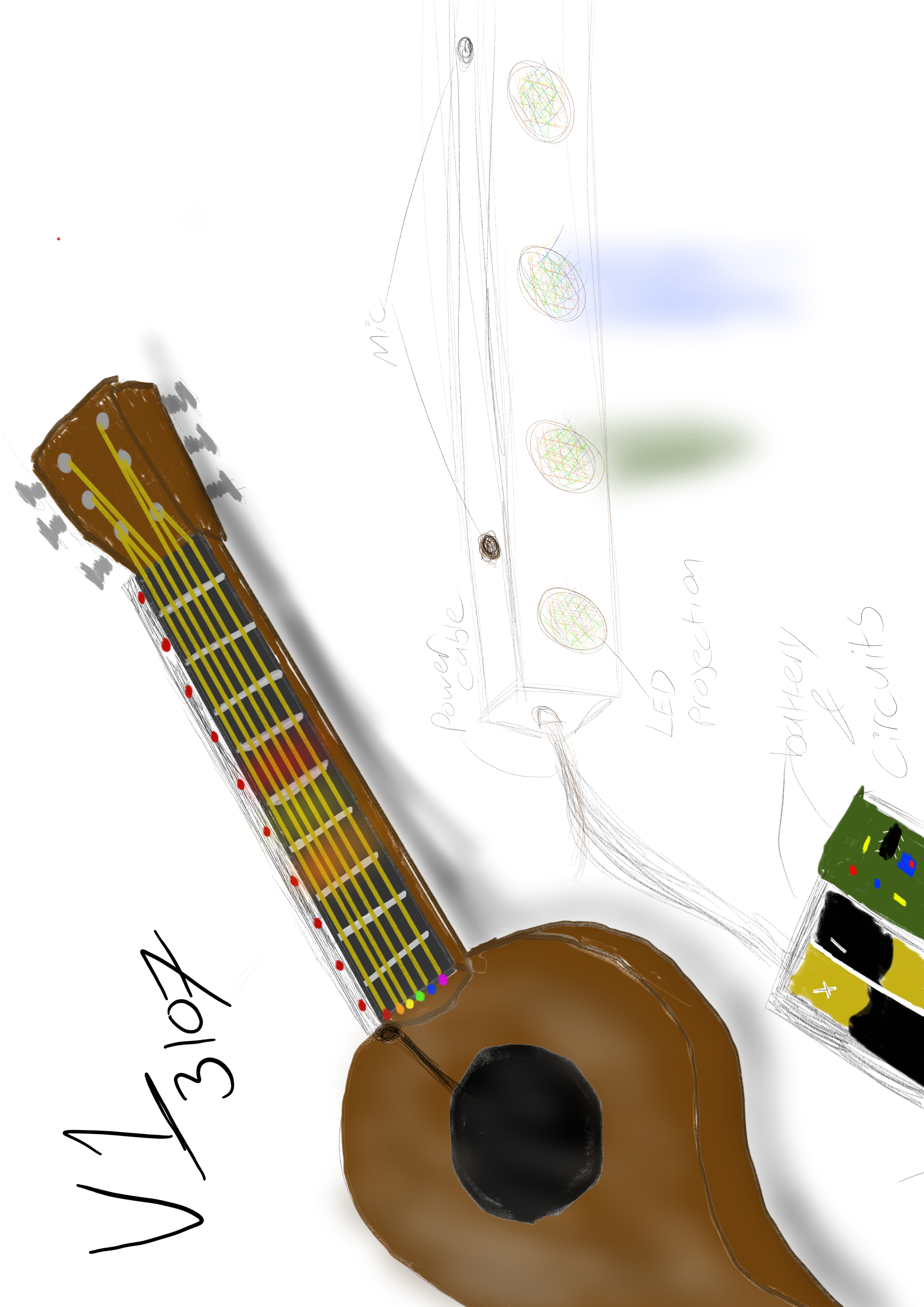
As seen in my first design I went with the projection method. Because the LED was not directly behind the strings, I had the idea to include multi-coloured strings with the product therefore this could guide the player. I also chose the design to be battery operated therefore the player is not restricted to time or location by having to plug the device into the wall outlet.
Where this design fails is its lack of adjustability, by using this design it would mean that the customer would have to check the sizing before buying and it would also cost more to manufacture as there would have to be multiple sizes designed and produced.
The design would also not be viable as my research question “How can we develop and produce a device that streamlines and simplifies the process of learning music theory?” states that the whole point is to make learning music theory as easy and accessible as possible. When strings are colour coded it means the user must also learn the muscle memory for each colour and associate the colour with the positioning.
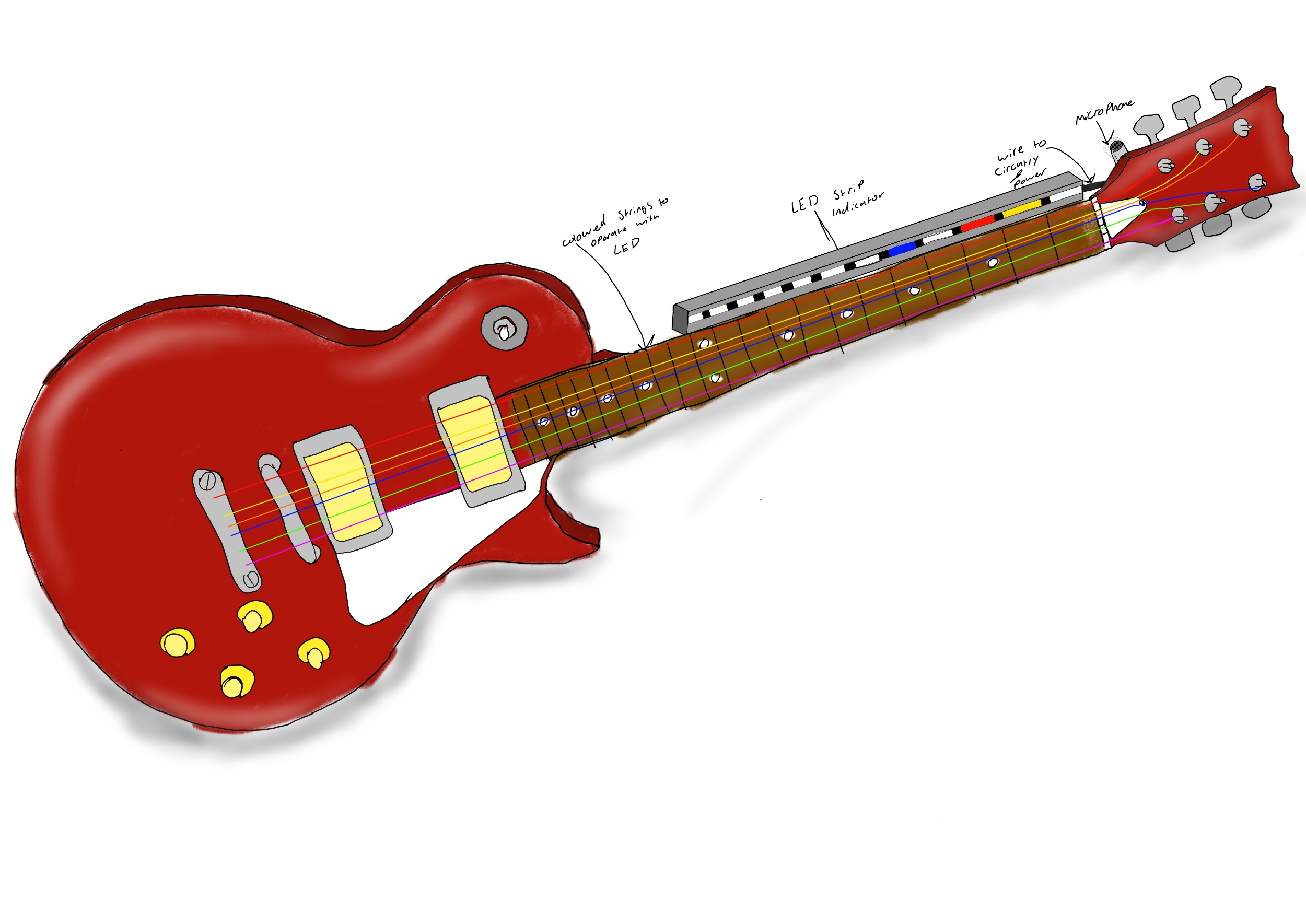
My second design also faces similar problems to the first design; the colour coded system would not be practical for something like this. Where this design improves the first one is that it would be modular meaning that it can fit on any size guitar making it a better choice over the competitor. Also, by having a one size fits all it eliminates the worry of measuring to find the right size therefore making it more attractive to the customer.
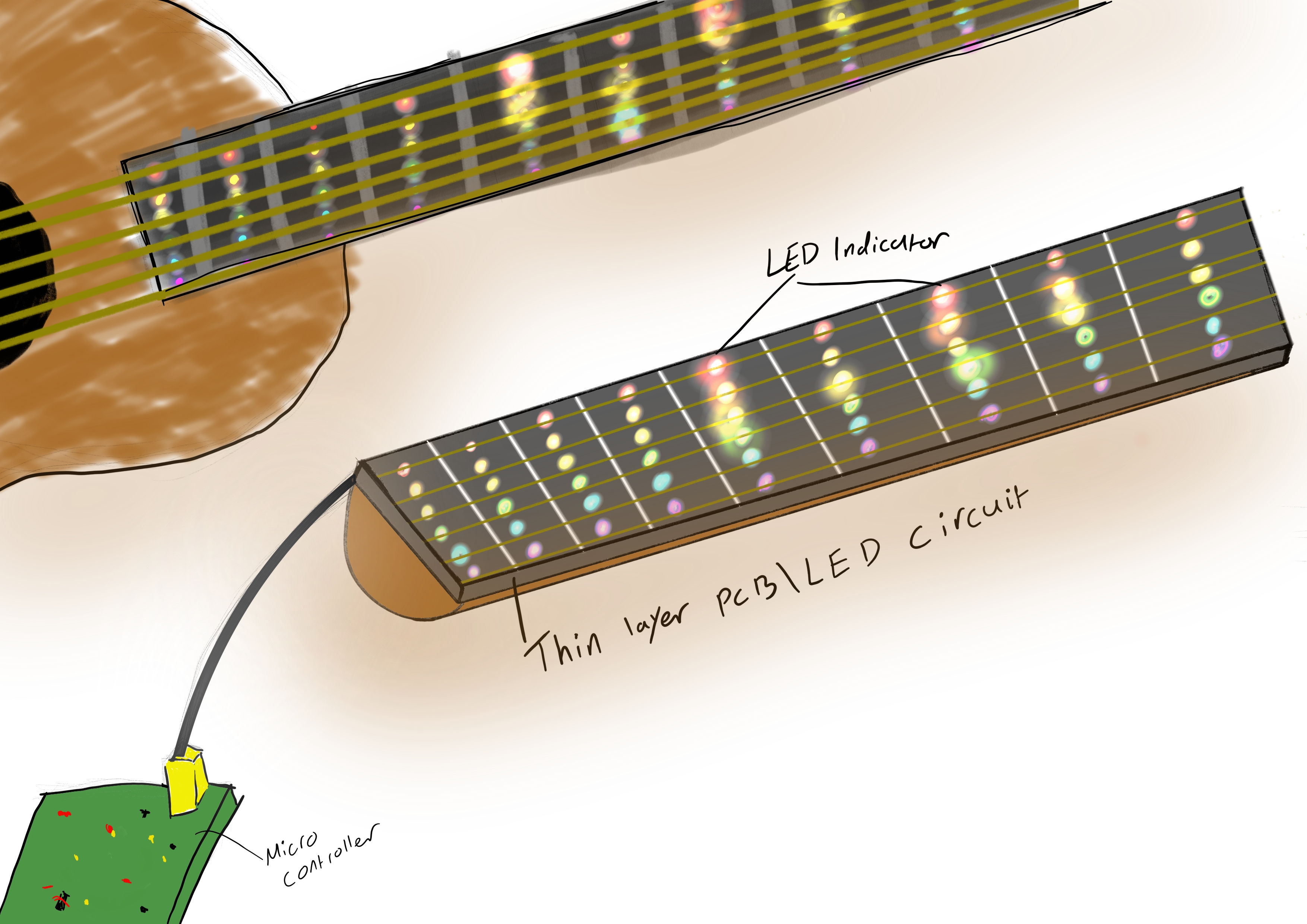
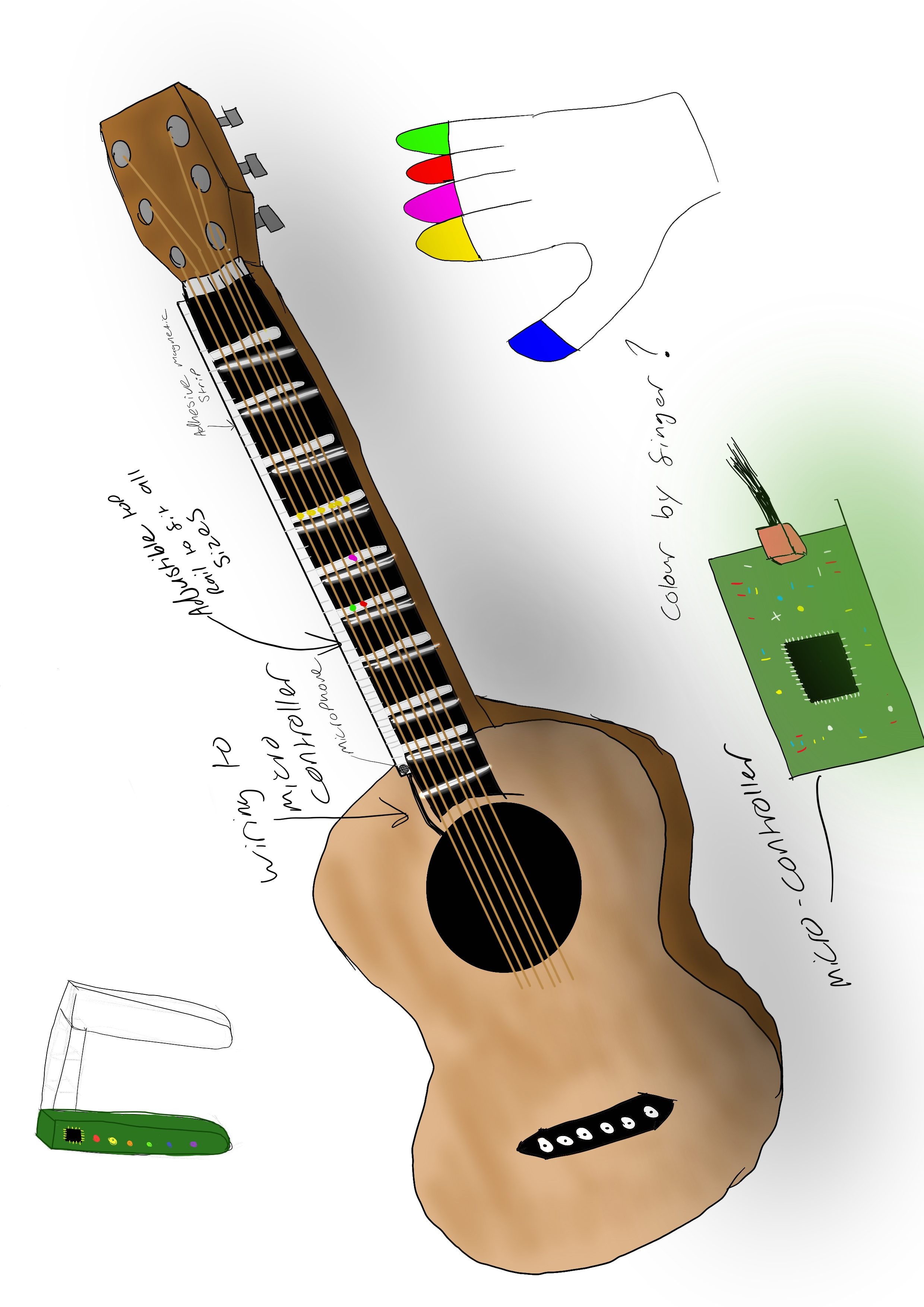
My third design adopted the methods of my competition by having the LED’s on the fretboard, however the micro controller and the brains behind the design will not be on the fretboard allowing for an even thinner design creating little to no intrusion. With an acoustic guitar the micro controller can be hidden away in the sound hole and on an electric guitar it can be housed on the back. However, this design would not be modular.
hen beginning my design process I created a basic electric guitar model to scale within autodek inventor. I chose inventor for this beacue I was using the guitar as a base model; I could make the model file an assembly, making it easier for my to import alternative designs onto my guitar. During the modeling process I used various tools such as extrude, fillet chamfer, loft and rectangular pattern.
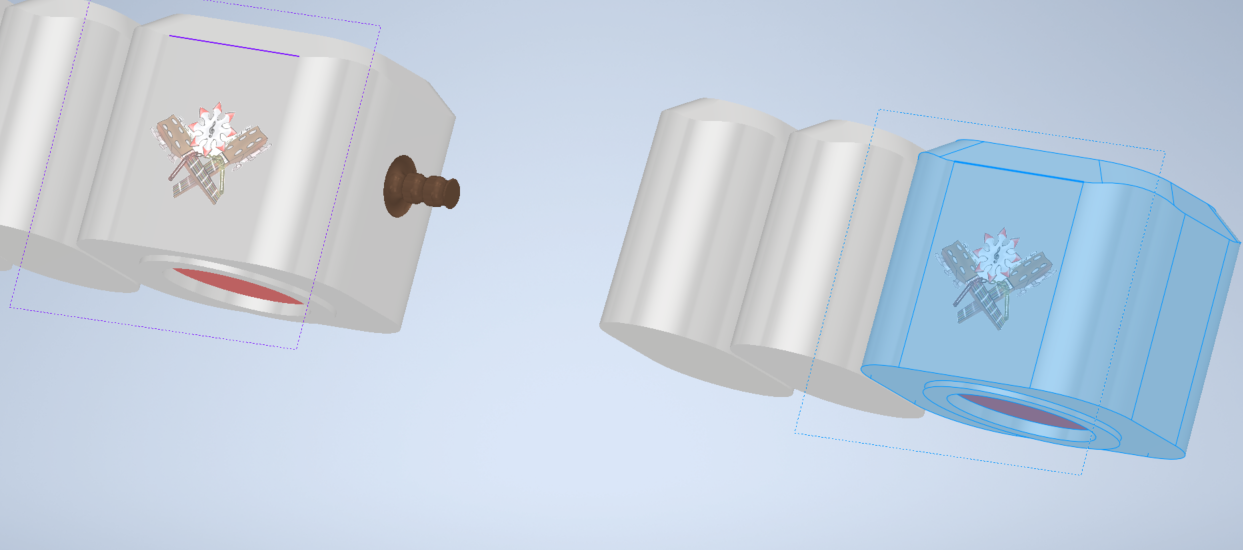
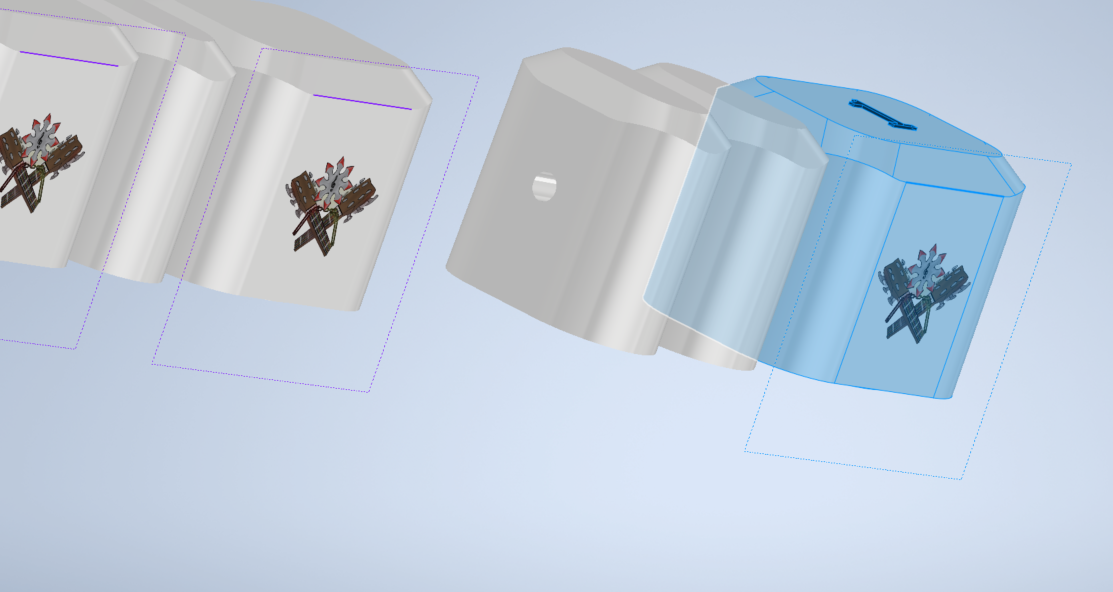
Design one was a modular plug and play style design, this was so that my product can intergrate with any sized guitar. To create this design I used many tools, but the project tool was especially useful here so I could project the sketches onto each other to ensure that the docking ports lined up, during the first draft of this design I forgot to project my sketches leading to the device slowly taking on a diagonal curve. I also used the canvas tool and created a plane on each of the segments for this design to display my logo on my device.
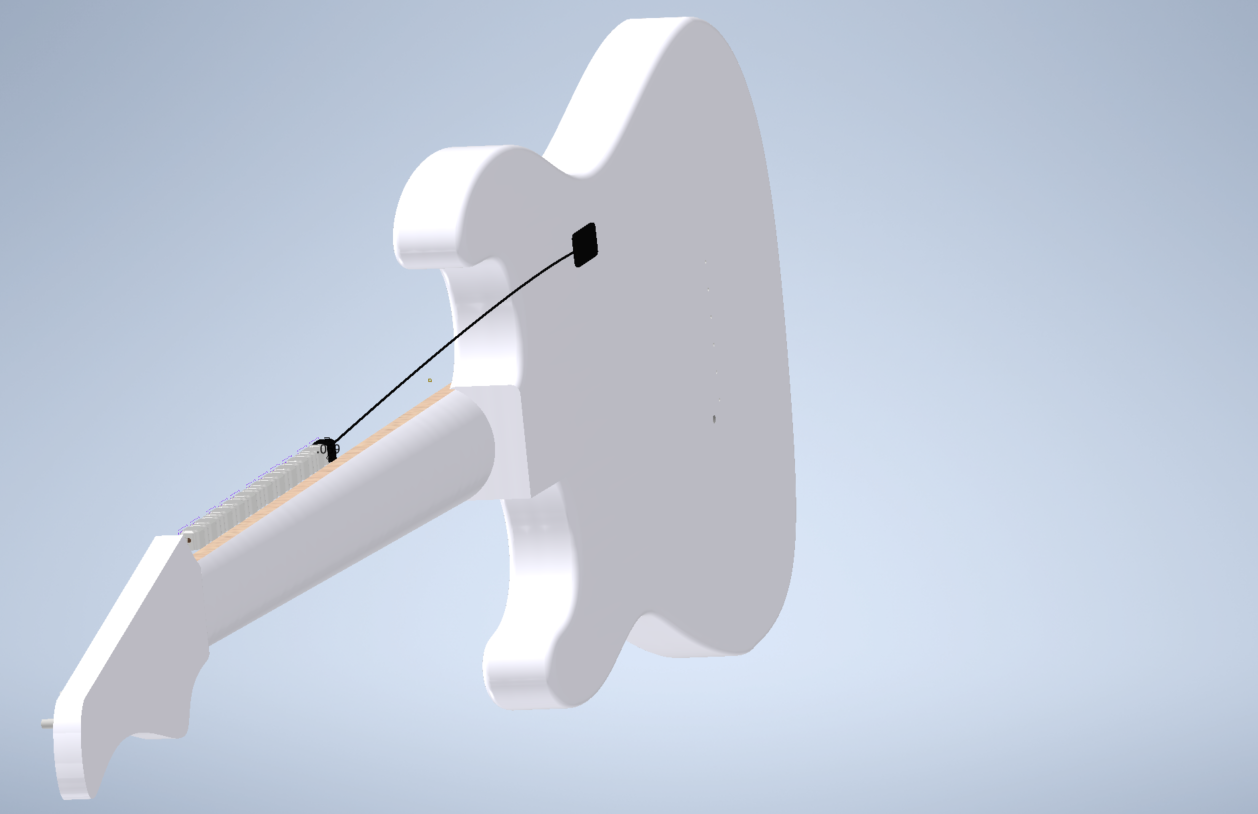
Design one used the 3D sketch tool in combonation with the sweep tool in order to create a wire from the final segment to the back of the guitar where the circuits and the battery are housed. When designing I chose to have the “brains” of the device at the back of the guitar to cause as little disruption to playing as possible.
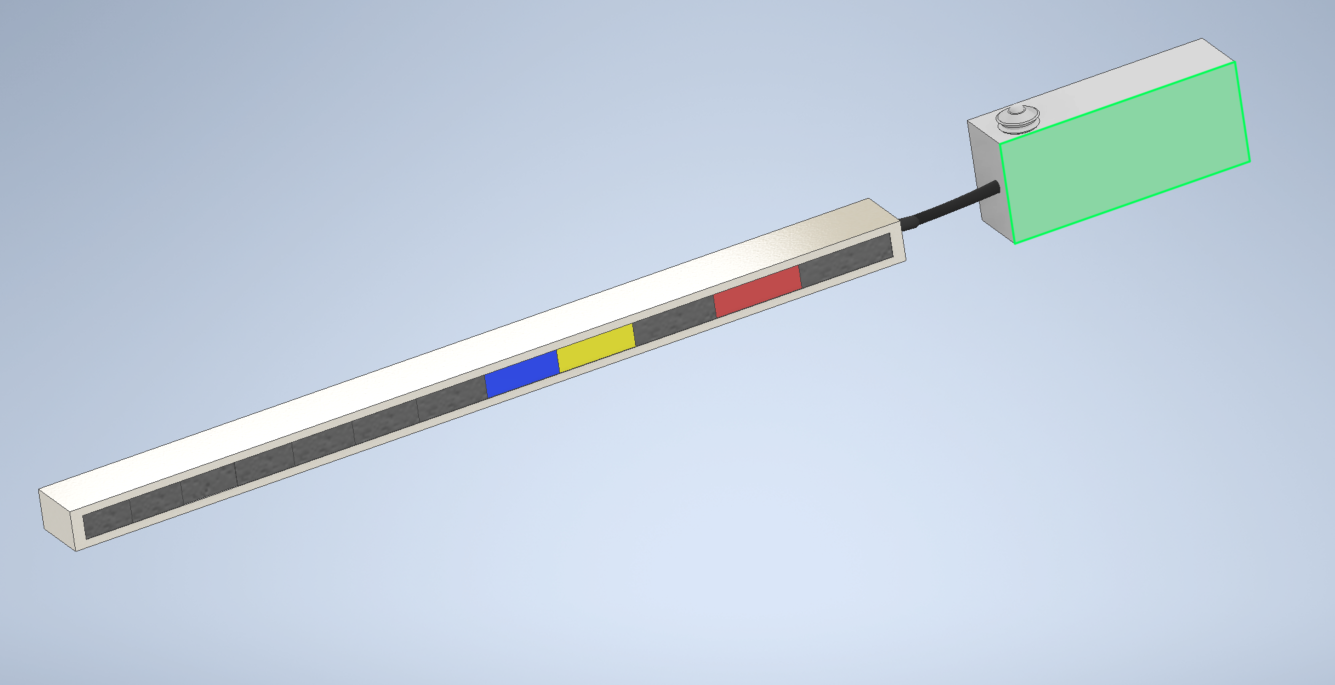
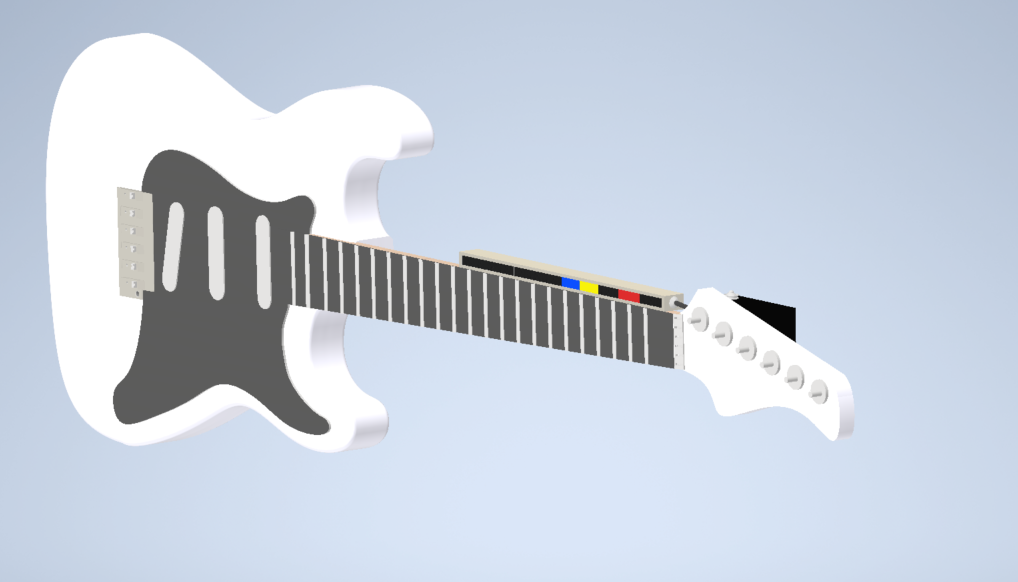
Modelling design two was far quicker. Again it was modelled in autodesk inventor and involed methods such as extrude, extruded cut and 3D sketch with a sweep to create the wire. The design housed the curcuits and battey behind the headstock, which leads to a shorter wire making for less disruption for the user.
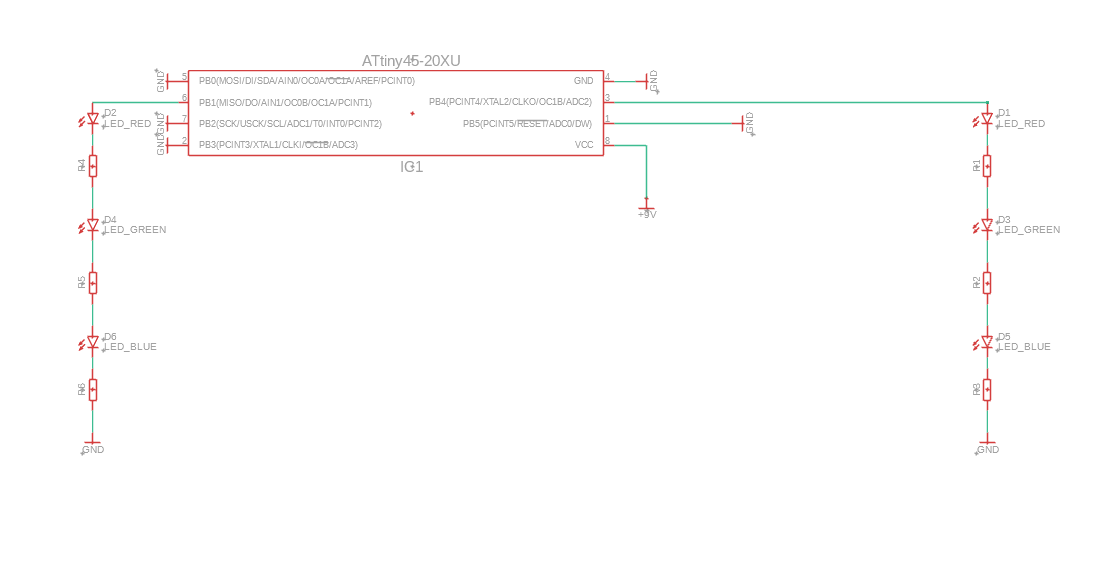
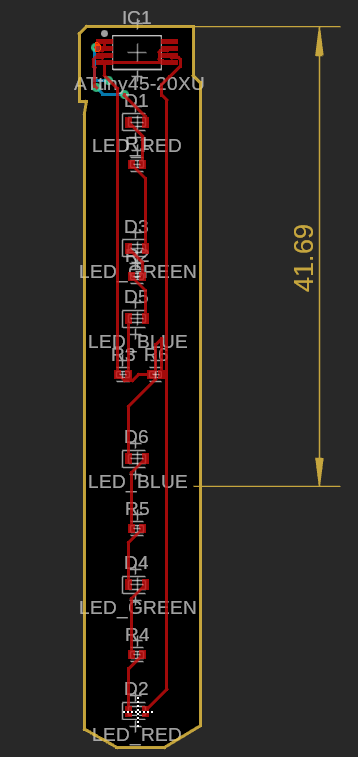
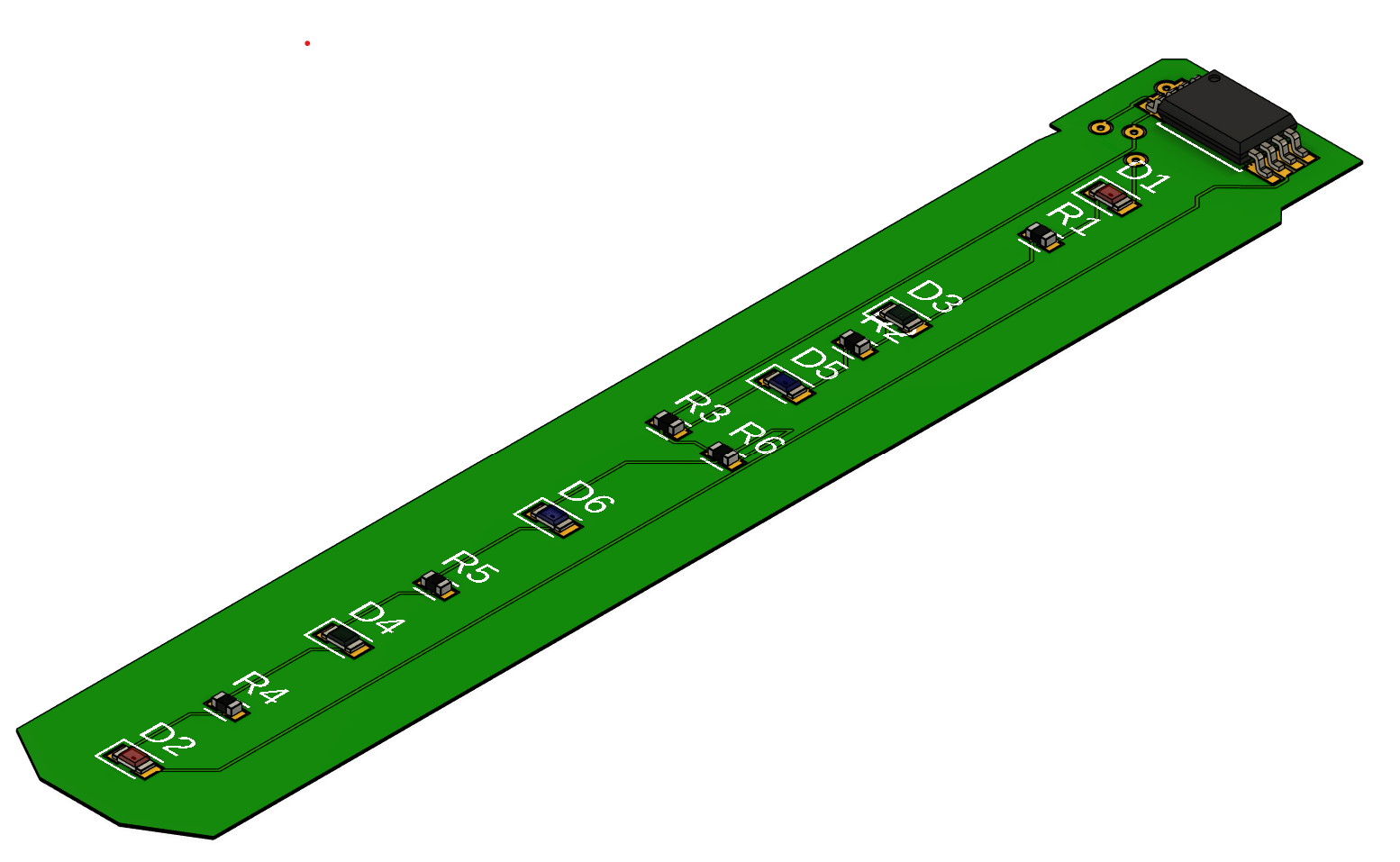
Design 3 was created using fusion electronics, I chose this software because of the large library for electrical compentes availible. Whilst the design would need to be much more refinded if it were to be produced as a prototype my design works as a visualizer/placeholder. The simple design consists of LED’s, resistors and a micro controller. I created the design with the thinnest board possible in order to not interfere with the strings on the guitar. Because both fusion 360 and inventor are by autodesk it was very easy to import one into the other which was a benefit.
This product is heavily reliant on an app, the product and the app will intergrate with eachother to work seemlessly. The idea is to have the app giving live feedbacl based on whats being played, the lights on the device will also react to the apps feedback. Its just as important for the app to look nice, be easy to navigate and have a premium quality look and feel. Which is why I took the time to chose house colours for my branding to keep the design for the app consistant.
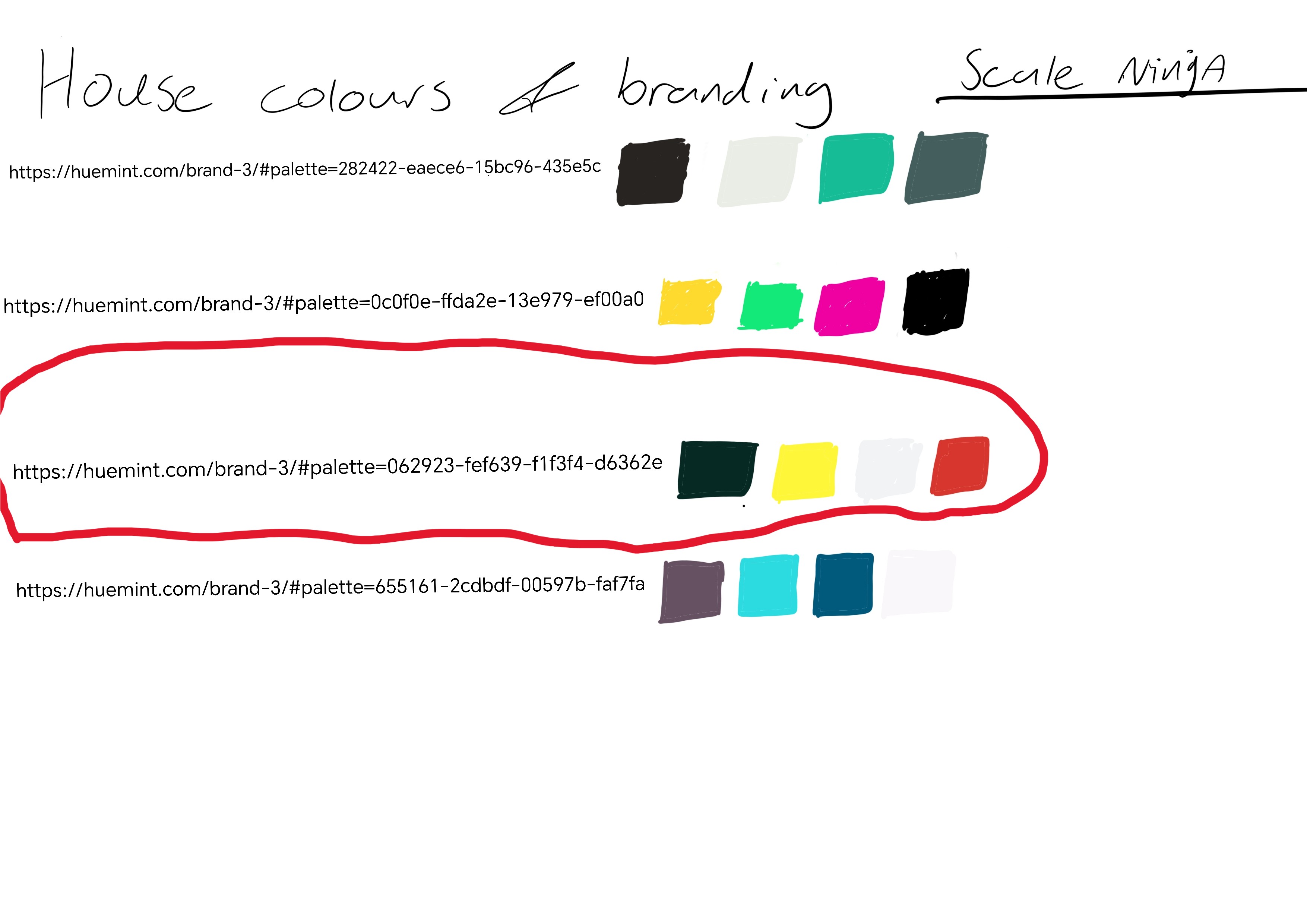
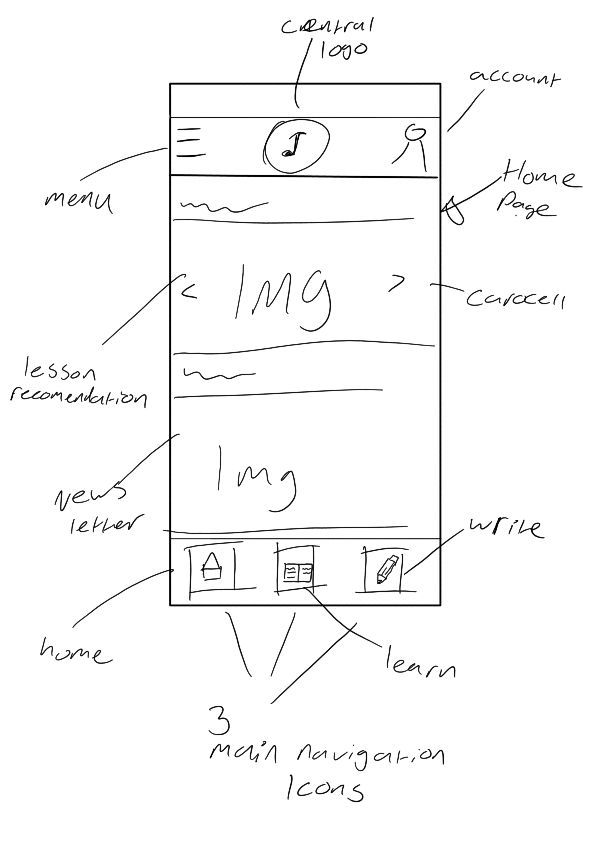
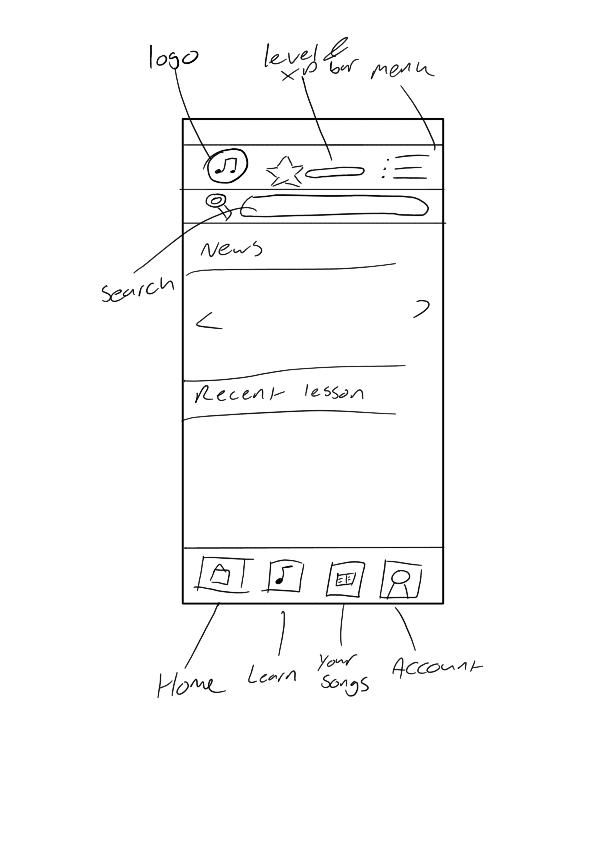
I also crafted some wire frame drawings to gather an idea for how I wanted my home screen to look and feel. Both designs have a similar feel to them as they both have a bottom menu and a top menu, they do differ in design choices tho.
.png)
The app’s designs was created in figma, this is because figma has a user friendly interface, a large library and the end result can be impressive.
.png)
Im really proud of the final app design. In the images the first image is the first thing a user will see, and its prompting them to sign into an acount, this is so the app can monitor and track progression. The secong screen is showing a drop down section to select your current experience and the final image is the main screen everybody will see.
The main screen has a cast button which allows the user to play their guitar lessons on a tv by using a chromecast or a smat tv. The top left is the messages button and this would take the user through to a dashboard displaying messages from other users. The idea behind the messaging feature allows users to communicate and build a community, which will make it more likley that our users stay motivated with their learning. Theres also a progression bar that shows the users level.
The bottom three buttons are notes, for if the user wants to write there own songs and lyrics. The central button is to record your audio to share your playing and the right tool is the search icon that lets the user search the whole app using key words.

As seen through all three of my designs they maintain similarities however they also different. The best design is design one as the method is projection, and this allows for the fret board to be clean and free of any obstacles like in design three. This design is also modular, it is very much a plug and play style design, as the design involves projectors and spacers in order to shorten or lengthen the device to suit the size of guitar.
Design three wouldn’t be practical for real use as the circuitry is too big, this would cause bad vibrations on the strings making the playing sound bad, which could risk the player losing motivation, also disabling the microphone from being able to accurately pick up sound and give valid feedback.
Design two has a sleek modern design that blends seamlessly within the guitars neck; however, it has the previous problem which is that the user might find It difficult to learn how to use the device due to the colour coded system. Getting used to this system can take time which could leave it open to customers losing motivation and or being put off from learning.

I planned to give myself fifteen weeks to complete this project. Gantt charts are a common time management tool that assist planning and scheduling of tasks within a project. These charts have a graph-like theme which aid the progress of tasks through visual representation.
Whilst juggling three project it is important to have time management to ensure each project is progressing and none are forgotten.
Throughout the duration of this project my time management slipped therefore leading to a lack of progress towards the mid portion of the project, this was a challenge I had to overcome, I did this by putting in extra hours in order to bring my work up to speed. I tend not to follow Gantt chars too carefully because of how difficult it can be to stay on track, especially since my lifestyle is not very structured and is always changing from week to week. Nevertheless, I managed to bring my work up to date and meet the deadlines set.
This project has developed an accessible, device that streamlines music theory education. Through research-driven improvements, it overcomes competitor limitations, ensuring seamless playability and effective user engagement. Strategic pricing and transparent product offerings enhance market positioning. The design merges traditional music education with modern technology, providing an intuitive and effective learning tool.
Fretzalot (2025) fretzalot. Available at: https://store.fretzealot.com/products/fret-zealot-2-guitar?srsltid=AfmBOooa-GRRa9P-XuV-tUZ3ArminZx7dZ0wNbasDsCrDYy1Gpit3S35 [accessed 17 February 2025].
Sharma, Kadian, Shah, Heena (2024) THE PSYCHOLOGY OF PRICING: HOW PRICING STRATEGIES AFFECT CONSUMER PERCEPTION. Available at: https://www.ifwworld.com/gangainstituteofeducation/wp-content/uploads/2025/01/Ms.-Preeti-Sharma-et-al.pdf [accessed 07 may 2025]
Thomann (2023) visual note music learning device g type. Available at: https://www.thomann.co.uk/visual_note_music_learning_device_g_type.htm?gad_source=1&gad_campaignid=1581403900&gclid=CjwKCAjwiezABhBZEiwAEbTPGN8ihqCOcdGnn4i4lQS31mE596kqUahHrlQi83qH1nO5IrSmVlG4mRoC-mAQAvD_BwE [accessed 17 February 2025]